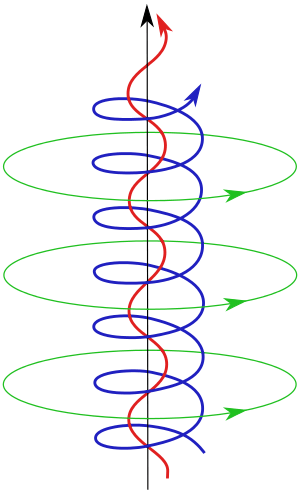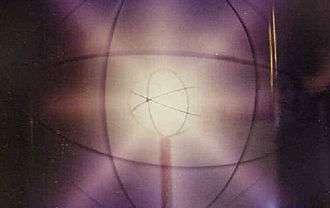Plasma parameters

Plasma parameters define various characteristics of a plasma, an electrically conductive collection of charged particles that responds collectively to electromagnetic forces. Plasma typically takes the form of neutral gas-like clouds or charged ion beams, but may also include dust and grains.[1] The behaviour of such particle systems can be studied statistically.[2]
Fundamental plasma parameters
All quantities are in Gaussian (cgs) units except energy and temperature expressed in eV and ion mass expressed in units of the proton mass ; is charge state; is Boltzmann's constant; is wavenumber; is the Coulomb logarithm.
Frequencies
- electron gyrofrequency, the angular frequency of the circular motion of an electron in the plane perpendicular to the magnetic field:
- ion gyrofrequency, the angular frequency of the circular motion of an ion in the plane perpendicular to the magnetic field:
- electron plasma frequency, the frequency with which electrons oscillate (plasma oscillation):
- ion plasma frequency:
- electron trapping rate:
- ion trapping rate:
- electron collision rate in completely ionized plasmas:
- ion collision rate in completely ionized plasmas:
- electron (ion) collision rate in slightly ionized plasmas:
where is a collision crossection of the electron (ion) on the operating gas atoms (molecules), is the electron (ion)
distribution function in plasma, and is an operating gas concentration.
Lengths
- Electron thermal de Broglie wavelength, approximate average de Broglie wavelength of electrons in a plasma:
- classical distance of closest approach, the closest that two particles with the elementary charge come to each other if they approach head-on and
each have a velocity typical of the temperature, ignoring quantum-mechanical effects:
- electron gyroradius, the radius of the circular motion of an electron in the plane perpendicular to the magnetic field:
- ion gyroradius, the radius of the circular motion of an ion in the plane perpendicular to the magnetic field:
- plasma skin depth, the depth in a plasma to which electromagnetic radiation can penetrate:
- Debye length, the scale over which electric fields are screened out by a redistribution of the electrons:
- Ion inertial length, the scale at which ions decouple from electrons and the magnetic field becomes frozen into the electron fluid rather than the bulk plasma:
- Free path is the average distance between two subsequent collisions of the electron (ion) with plasma components:
where is an average velocity of the electron (ion), and is the electron or ion collision rate.
Velocities
- electron thermal velocity, typical velocity of an electron in a Maxwell–Boltzmann distribution:
- ion thermal velocity, typical velocity of an ion in a Maxwell–Boltzmann distribution:
- ion sound velocity, the speed of the longitudinal waves resulting from the mass of the ions and the pressure of the electrons:
- ,
where is the adiabatic index, and here is the number of degrees of freedom
- Alfvén velocity, the speed of the waves resulting from the mass of the ions and the restoring force of the magnetic field:
Dimensionless

- square root of electron/proton mass ratio
- number of particles in a Debye sphere
- Alfvén velocity/speed of light
- electron plasma/gyrofrequency ratio
- ion plasma/gyrofrequency ratio
- thermal/magnetic pressure ratio ("beta")
- magnetic/ion rest energy ratio
- Coulomb logarithm is an average coefficient taking into account far Coulomb interactions of charged particles in plasma.
Its value is evaluated in the nonrelativistic case approximately for electrons ,
for ions
See also
References
- NRL Plasma Formulary (esp. p. 28 and p. 29), J.D. Huba, Naval Research Laboratory (2007)